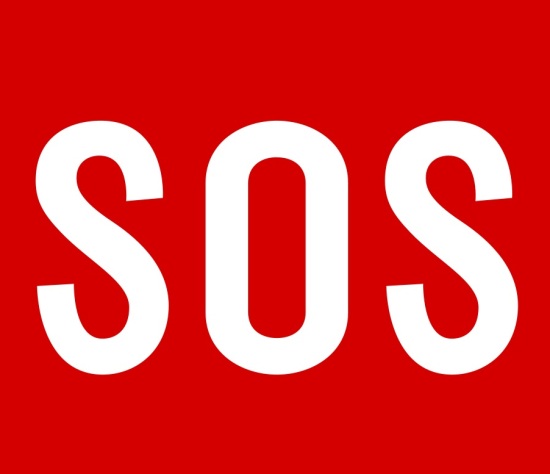In a wilderness survival situation, knowing how to find food, build a fire, and purify water can mean the difference between life and death. None of those things, however, will help you get home. Only emergency communications techniques can help you catch the attention of rescuers and get back to civilization.
There are several techniques for making emergency contact with rescuers. You can use signal fires, mirrors, sounds or body signals to make your presence known. You can even build a ground signal to be viewed from above by airborne rescue parties. Let’s take a look at some of the survival signals that can get you out of an emergency situation.
Signal Fires
Fire is a good way to signal for help night and day. Use the international fire signal for help — three fires laid out in a triangular formation. Build your fires in an open area where they can be seen from above; if you’re in a heavily forested region, a clearing will do.
If you can’t build three fires in a triangular formation because of space issues, build three fires in a straight line. If there isn’t enough room for that, just build one fire as large as possible. Make sure you collect plenty of fuel to keep your fires stoked before it gets too dark to see.
In the daytime, you can use the smoke from your fires to signal for help. Smoke is as visible in the daylight as flames are at night. Make your fire as smoky as possible by throwing fresh green branches onto it.
The international smoke signal for help is three puffs of smoke. Use a jacket, shirt, blanket or sleeping bag to cover the fire briefly; lift it away and then quickly cover it again to create a single puff. Do this three times to create the signal, and then cover the fire for a moment longer before starting another signal. If possible, dampen the fabric first and keep it damp, so it doesn’t burst aflame.
When building signal fires or any fires in the wilderness, take the appropriate precautions to make sure it doesn’t spread. You don’t want to burn down the whole forest. Clear brush and debris away from the perimeter of the fire, and make sure that any sparks the fire throws will land on bare dirt.
Dig a six-inch depression to build your fire in. Watch your fire at all times and keep a pile of loose earth or, if you have a container, some water nearby just in case you need to smother any flames.
Mirror Signals
You can use a mirror, belt buckle, canteen, soda can or any other reflective surface — even the foil wrapper from a pack of gum — to send a rescue signal. Use your reflective object to aima beam of sunlight toward rescuers to catch their attention and direct them to your location.
Body Signals
If you see a plane, helicopter or a passing ship, you can use body signals to communicate your need for help. Ask for rescue by holding your arms above your head.
If your rescuers are in a helicopter and there’s a safe landing place nearby, you can direct them to it by squatting down and pointing your arms in that direction. If there’s no safe landing place, hold both arms side by side above your head and wave them back and forth.
Sound Signals
You can communicate with rescuers using sound, but it’s recommended you not try to shout for rescue. Shouting wastes energy, and the sound of your voice won’t carry as far as you might think. Instead of shouting for rescue, whistle. Most emergency survival kits come with a whistle for this reason.
Ground Signals
Communicate with airborne rescuers by spelling out an SOS signal on the ground near your location. Find a large open space and spell out your message using materials that contrast as much as possible with their background. Sticks and branches are good on a beach, and piles of rocks are a good choice for an open field.
In a snowy landscape, tamp down an SOS in the snow and then fill the indentations with gravel or plant matter. If you’re in a heavily forested area, consider creating an SOS signal in the treetops by draping any colorful pieces of clothing that you don’t need over the branches so they can be seen from the air.
Fasten them in place as best you can so that they don’t blow away. Don’t worry if they don’t spell out “SOS;†they’ll look unusual enough to get your message across.
Knowing how to send survival signals is crucial to escaping from an emergency situation. Fire, sound, reflective objects, body signals and messages spelled out on the ground are all good ways to signal rescuers in an emergency situation.
About the Author: Steve Manley is the president of Globalcom Satellite Communications, a leading distributor of satellite phones for both purchase and rental. If you are planning an adventure and don’t want to risk having to send out an SOS, visit https://www.globalcomsatphone.com/products.html to check out the best in satellite phones.
Photo Credit By: wiki.stadt-koeln.de











